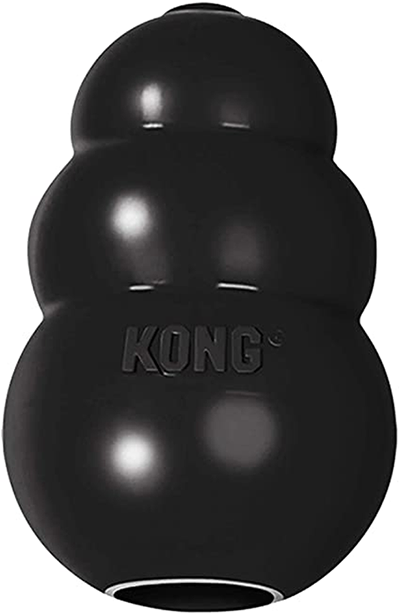Training & Behavior Foster & Adopt
Crate Training a Rescue Dog: Beginners’ Guide
Crate training a rescue dog takes as much effort as training a puppy. Rescue dogs often suffer from a lot of emotional trauma making any sort of conditioning a difficult task. However, it doesn’t mean they can’t find happiness or become disciplined and adorable family members.
With love, commitment, and patience, even the most anti-crate pup can become pro-crate because of the positive vibes and memories that you build for them.
As a pet advocate and having rescued many dogs from difficult situations, I know the importance of crate training. That’s why I want to help you to have as many positive crate experiences with your rescue dog as possible.

Why Crate Train a Rescue Dog?
Did you know dogs are den animals and naturally seek out small spaces where they can relax, chill, and snuggle without being disturbed by everything else going on around them?
As such, crating is an opportunity to tap into your dog’s natural instincts. Done the right way, it makes life easy, predictable, and comfortable for you and your canine friend because you both understand what that space represents.
Additionally, because your dog associates crates with normalcy, they won’t feel apprehensive when they have to:
- Stay in a crate overnight at the vet
- Travel in a plane or bus
- Get evacuated via crates during emergencies
- Hold their bathroom needs
When Should You Crate Train a Rescue Dog?
Introduce crate training to your dog from day one. However, please don’t force it on them.
Instead, make it a comfortable experience by providing a bed that’s hard to chew but easy to clean, adding some interactive and indestructible toys, and placing it where you and your family hang out the most.
Leave the doors open and secured to let them walk in and out freely if they’re confident. If they’re not, don’t worry. They will get there sooner or later.
Additionally, consider starting training on Friday night to give yourself enough time to communicate your intentions and expectations. Your dog will not love the crate by Monday, but they will know something is happening with that setting.
On weekdays, crate train at night as that’s when you’re more likely to have time to take it slow and steady.
Expert Tip: Buy a crate that allows your dog to turn, stand, and lie down. But, too much space will make them believe that one side can be the bathroom, and you don’t want that.
How Do You Make a Crate an Emotionally Secure Place?
Tip 1: Feed Your Dog in the Crate Daily
The best way to make a crate dog-friendly is by taking advantage of their food drive.
Your pooch might look wary when you put their food inside the crate. However, the sooner they associate the setting with meals, the quicker they will come to love it.
Food is a basic need. If a crate means feeding time, then it’s a good place.
But don’t shove the food right to the back. On the first day, start at the entrance. With every feeding, push it a little further into the crate until your dog is comfortable.
Remember to praise your pup for every milestone they achieve with the food-in-crate distance. It helps communicate your expectations.
Tip 2: Build Crating Time Progressively
Take crating easy and slow, especially when locking and latching the door.
If you close and latch too soon, your dog might get apprehensive. In the video below, notice how a rescued dog felt deceived (and lonely) when locked in a crate the first time.
Follow these steps:
1. Keep the doors open and secured during the first few minutes or hours of training. Make the environment more about eating and bonding with you than being forced to stay there.
2. After some degree of familiarity with the crate, start closing the door for a few minutes, but don’t latch.
Additionally, use those first few intervals to talk to your dog, calm them, and spoil them with treats and attention.
3. Watch out for behavioral cues showing how your dog perceives the crate. If it scares them, they will show signs of worry, such as trembling, submissive grinning, flat or backward laying ears, and tail between the legs because:
- They could have been crated most of their life. Therefore, a crate represents abandonment, loneliness, and other emotional wounds.
- Their former owner used crates as a punishment. Using it on them enhances their emotional trauma and mistrust and makes bonding harder.
- They have never been in a crate. The unfamiliar setting breeds fear, resistance, and doubt.
4. Sit by the crate, talk, and feed them for a little longer. Help your furry friend understand what’s going on.
5. After a while, start latching the door and walking away for, say five to ten minutes. On returning, reward them with a treat and praise their good behavior.
6. Then, unlatch and open the door. Pet the pup for a few seconds to let them know they have achieved something and satisfied your expectations.
7. Afterward, restart the process of closing, latching, and opening the door. You can repeat it up to five times or until your pup is comfortable being left alone for a few minutes.
8. Over the next few days, progressively increase the crating intervals. You can start with intervals of 15 minutes.
Record your dog’s behavior when in the crate with a camera. These signs will help you determine their readiness for longer crating.
Also, don’t crate a mature dog for more than five hours consecutively. They will need a bathroom break every 4–5 hours.
Expert Tip: Don’t let whining or whimpers tempt you into letting your pup out. Also, don’t praise them when letting them out. Otherwise, they will think that leaving the crate is a good thing.
Tip 3: Choose Crate Toys Wisely
There is a reason I don’t recommend blankets, towels, or destructible toys when crate training a rescue dog.
In your absence, your new companion might feel lonely or anxious. If his crate has destructible objects, he might tear them apart and accidentally consume the products, risking choking or digestive issues.
That’s why I recommend indestructible toys, such as the Kong, to keep your chewing monster occupied through healthy play and snacking.

Source: amazon.com
Watch the video below for insights on what toys shouldn’t go in the crate. Towards the end, notice the importance of having a mentally challenging toy (with treats stuffed inside) over a simple one.
Frequently Asked Questions
Are crates safe?
By and large, crate training safety is dog and trainer-dependent. For example, remember to remove collars before crating to prevent strangulation.
If your dog likes to burrow with its nose, wag its tail a lot, curl, or chew things, consider investing in crate pads and bumpers to prevent metal-related injuries.
Should I buy a crate cover?
It depends on your dog’s behavior. A crate cover is warranted if they get distracted easily. They might get hurt trying to escape.
Can I crate train an older dog?
Crate training is the biggest favor you can do for your dog, regardless of age, because it gives them that den-like feeling.
My dog hates his crate. What should I Do?
Check a few vital things:
- Safety and comfort. Does the crate look and feel like a den? Is it safe with an interactive toy to play with or chew?
- Location. Dogs are also social animals. They want to be with you while holding their ground.
- Time. The more they are in the crate, the more they will hate it.
- Usage. Never use the crate for punishment or push your dog in by force. Train and talk him into loving that setting. Also, don’t always crate them when leaving. They will grow to resist it.
From The Community
We asked our Facebook community what they do to make their dogs feel safe in a crate. Here are some of the answers
“We put ‘MUSIC FOR DOG” from Youtube on a tablet outside of the crate so he can watch and listen to it.”
– Rebecca
“I put a tshirt in that smelled like me for one of my girls that had a bit of separation anxiety. Also a ticking clock when she was a puppy.”
– Judy
“Tossing toys and treats in at random so they have to go and retrieve them and get used to spending short periods of time there. feeding inside the crate. letting them spend short amounts of time in the crates and slowly increasing time inside and left alone.”
– Jade
“I sleep beside my dogs crate for about a week and held her paw. Now her crate is her safe place.”
– Diane
“Raise the crate to your bedside at night. Frozen Kong with baby food or yogurt sealed with peanut butter. Chew toys .”
– Sally
“Never ever put your pet in a kennel wearing a collar. I lost a 4 month old puppy due to her collar getting hung up on a rung in the bottom of the crate. Poor girl choked herself to death trying to get free. Please remove the collar before putting them inside.”
-Raymond
What’s a Rescue Dog?
A rescue dog is an animal that has been saved from homelessness, abandonment, and neglect. Shelters can also rescue a dog in need, however, ‘rescue dogs’ generally refers to animals under the care of rescue centers.
The table below highlights the differences between animal rescue centers and shelters.
| Rescue Centers | Animal Shelters |
| Group of or individual animal enthusiasts and volunteers | Could be charities or private nonprofits |
| Collect strays or accept them from the public | Some accept animals from individuals, but many have long waiting lists due to overcrowding at the shelters |
| Sometimes, lack enough space to keep the animals they find | Size and animal population varies |
| Run by individuals or groups with funds from well wishers and sometimes out-of-pocket | Managed by animal welfare agencies |
| Provide vet services for physical healing and stress-free environments for emotional healing | Conduct comprehensive physical examinations and some shelters do run temperament exams, however, neglect due to overcrowding is a common issue |
| Dogs are watched closely because they are few | Overcrowding can lead to neglect, especially for sick animals or those with temperament issues |
| Find volunteer or foster homes for every animal | Find foster homes; healthy animals take priority because they’re more marketable |
| No-kill policy for the sick, handicapped, or senior dogs; accept all animals regardless of physical or mental condition | Some have a kill policy for sick and old animals |
About Rocky Kanaka
I’m a pet rescue advocate, Emmy-nominated host and creator of my own show. My passion is sharing stories about rescue dogs, pet adoption, fostering, and volunteering because I believe that every dog deserves a loving home.
I’m a dog dad to a rescued boxer named Flip, a blind Cane Corso called Kobe, and a senior terrier-mix named Zoey, along with the many foster dogs I help on their way to their forever home.
Enjoy magical transformations, heart-warming rescues and meeting unique people and their incredible dogs via YouTube, Facebook, Instagram.
